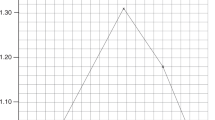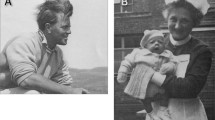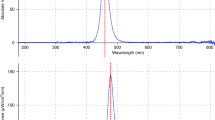Abstract
Objective:
We investigate whether double phototherapy reduces total serum bilirubin concentration faster than single light during intensive phototherapy with high levels of irradiance using light-emitting diodes.
Study Design:
Eighty-three infants with gestational age ⩾33 weeks and uncomplicated hyperbilirubinemia were randomized to either double (n=41) or single phototherapy (n=42) for 24 h. The mean irradiance was 64.8 μW cm−2 nm−1 from above and 39 μW cm−2 nm−1 from below.
Results:
The percentage decreases of total serum bilirubin after 12 h of double vs single phototherapy were (mean (95% confidence interval (CI))) 39% (37 to 42) vs 30% (27 to 32), respectively (P<0.001). After 24 h, the decreases were 58% (56 to 61) vs 47% (44 to 50), respectively (P<0.001). The results were still significant after adjustment for confounding. The only side effect was loose stools.
Conclusion:
Even with intensive phototherapy increasing spectral power by increasing the irradiated body surface area, the efficacy of phototherapy is improved.
This is a preview of subscription content, access via your institution
Access options
Subscribe to this journal
Receive 12 print issues and online access
$259.00 per year
only $21.58 per issue
Buy this article
- Purchase on Springer Link
- Instant access to full article PDF
Prices may be subject to local taxes which are calculated during checkout

Similar content being viewed by others
References
Jasprova J, Dal Ben M, Vianello E, Goncharova I, Urbanova M, Vyroubalova K et al. The biological effects of bilirubin photoisomers. PLoS ONE 2016; 11: e0148126.
Maisels MJ . Why use homeopathic doses of phototherapy? Pediatrics 1996; 98: 283–287.
American Academy of Pediatrics Subcommittee on Hyperbilirubinemia. Management of hyperbilirubinemia in the newborn infant 35 or more weeks of gestation. Pediatrics 2004; 114: 297–316.
Boonyarittipong P, Kriangburapa W, Booranavanich K . Effectiveness of double-surface phototherapy versus single-surface phototherapy for neonatal hyperbilirubinemia. J Med Assoc Thai 2008; 91: 50–55.
Nuntnarumit P, Naka C . Comparison of the effectiveness between the adapted-double phototherapy versus conventional-single phototherapy. J Med Assoc Thai 2002; 85: s1159–s1164.
Sarici SU, Alpay F, Unay B, Ozcan O, Gokcay E . Double versus single phototherapy in term newborns with significant hyperbilirubinemia. J Trop Pediatr 2000; 46: 36–39.
Garg AK, Prasad RS, Hifzi IA . A controlled trial of high-intensity double-surface phototherapy on a fluid bed versus conventional phototherapy in neonatal jaundice. Pediatrics 1995; 95: 914–916.
Kang JH, Shankaran S . Double phototherapy with high irradiance compared with single phototherapy in neonates with hyperbilirubinemia. Am J Perinatol 1995; 12: 178–180.
Holtrop PC, Ruedisueli K, Maisels MJ . Double versus single phototherapy in low birth weight newborns. Pediatrics 1992; 90: 674–677.
Hansen T Neonatal Jaundice Treatment & Management. 2016; Available at http://emedicine.medscape.com/article/974786-treatment. Accessed 4 March 2016.
Bratlid D, Nakstad B, Hansen TW . National guidelines for treatment of jaundice in the newborn. Acta Paediatr 2011; 100: 499–505.
Ebbesen F, Madsen P, Stovring S, Hundborg H, Agati G . Therapeutic effect of turquoise versus blue light with equal irradiance in preterm infants with jaundice. Acta Paediatr 2007; 96: 837–841.
Ebbesen F, Vandborg PK, Madsen PH, Trydal T, Jakobsen LH, Vreman HJ . Effect of phototherapy with turquoise vs blue LED light of equal irradiance in jaundiced neonates. Pediatr Res 2016; 79: 308–312.
Doumas BT, Kwok-Cheung PP, Perry BW, Jendrzejczak B, McComb RB, Schaffer R et al. Candidate reference method for determination of total bilirubin in serum: development and validation. Clin Chem 1985; 31: 1779–1789.
Donneborg ML, Knudsen KB, Ebbesen F . Effect of infants' position on serum bilirubin level during conventional phototherapy. Acta Paediatr 2010; 99: 1131–1134.
Tan KL . The pattern of bilirubin response to phototherapy for neonatal hyperbilirubinemia. Pediatr Res 1982; 670–674.
Vreman HJ, Wong RJ, Stevenson DK . Phototherapy: current methods and future directions. Semin Perinatol 2004; 28: 326–333.
Onishi S, Isobe K, Itoh S, Manabe M, Sasaki K, Fukuzaki R et al. Metabolism of bilirubin and its photoisomers in newborn infants during phototherapy. J Biochem 1986; 100: 789–795.
Ennever JF, Costarino AT, Polin RA, Speck WT . Rapid clearance of a structural isomer of bilirubin during phototherapy. J Clin Invest 1987; 79: 1674–1678.
Linfield DT, Lamola AA, Mei E, Hwang AY, Vreman HJ, Wong RJ et al. The effect of hematocrit on in vitro bilirubin photoalteration. Pediatr Res 2016; 79: 387–390.
Ebbesen F, Madsen PH, Vandborg PK, Jakobsen LH, Trydal T, Vreman HJ . Bilirubin isomer distribution in jaundiced neonates during phototherapy with LED light centered at 497 nm (turquoise) vs 459 nm (blue). Pediatr Res 2016; 80: 511–515.
Mreihil K, Madsen P, Nakstad B, Benth JS, Ebbesen F, Hansen TW . Early formation of bilirubin isomers during phototherapy for neonatal jaundice: effects of single vs double fluorescent lamps vs photodiodes. Pediatr Res 2015; 78: 56–62.
Hansen TW, Nietsch L, Norman E, Bjerre JV, Hascoet JM, Mreihil K et al. Reversibility of acute intermediate phase bilirubin encephalopathy. Acta Paediatr 2009; 98: 1689–1694.
Aydemir O, Soysaldi E, Kale Y, Kavurt S, Bas AY, Demirel N . Body temperature changes of newborns under fluorescent versus LED phototherapy. Indian J Pediatr 2014; 81: 751–754.
Bertini G, Perugi S, Elia S, Pratesi S, Dani C, Rubaltelli FF . Transepidermal water loss and cerebral hemodynamics in preterm infants: conventional versus LED phototherapy. Eur J Pediatr 2008; 167: 37–42.
Aycicek A, Kocyigit A, Erel O, Senturk H . Phototherapy causes DNA damage in peripheral mononuclear leukocytes in term infants. J Pediatr (Rio J) 2008; 84: 141–146.
Mohamed WW, Niazy WH . Genotoxic effect of phototherapy in term newborn infants with hyperbilirubinemia. J Neonatal Perinatal Med 2012; 5: 381–387.
Tozzi E, Tozzi-Ciancarelli MG, Di Giulio A, D'Alfonso A, Farello G, Spennati GF et al. In vitro and in vivo effects of erythrocyte phototherapy on newborns. Biol Neonate 1989; 56: 204–209.
Kahveci H, Dogan H, Karaman A, Caner I, Tastekin A, Ikbal M . Phototherapy causes a transient DNA damage in jaundiced newborns. Drug Chem Toxicol 2013; 36: 88–92.
Tatli MM, Minnet C, Kocyigit A, Karadag A . Phototherapy increases DNA damage in lymphocytes of hyperbilirubinemic neonates. Mutat Res 2008; 654: 93–95.
Sirota L, Straussberg R, Gurary N, Aloni D, Bessler H . Phototherapy for neonatal hyperbilirubinemia affects cytokine production by peripheral blood mononuclear cells. Eur J Pediatr 1999; 158: 910–913.
Kurt A, Aygun AD, Kurt AN, Godekmerdan A, Akarsu S, Yilmaz E . Use of phototherapy for neonatal hyperbilirubinemia affects cytokine production and lymphocyte subsets. Neonatology 2009; 95: 262–266.
Brewster DH, Tucker JS, Fleming M, Morris C, Stockton DL, Lloyd DJ et al. Risk of skin cancer after neonatal phototherapy: retrospective cohort study. Arch Dis Child 2010; 95: 826–831.
Acknowledgements
We thank the nurses, doctors in charge and the laboratory technicians for their excellent assistance.
Author information
Authors and Affiliations
Corresponding author
Ethics declarations
Competing interests
The authors declare no conflict of interest.
Rights and permissions
About this article
Cite this article
Donneborg, M., Vandborg, P., Hansen, B. et al. Double versus single intensive phototherapy with LEDs in treatment of neonatal hyperbilirubinemia. J Perinatol 38, 154–158 (2018). https://doi.org/10.1038/jp.2017.167
Received:
Revised:
Accepted:
Published:
Issue Date:
DOI: https://doi.org/10.1038/jp.2017.167
This article is cited by
-
Effect of blue LED phototherapy centered at 478 nm versus 459 nm in hyperbilirubinemic neonates: a randomized study
Pediatric Research (2021)
-
Prediction of ABO hemolytic disease of the newborn using pre- and perinatal quantification of maternal anti-A/anti-B IgG titer
Pediatric Research (2021)
-
Sixty years of phototherapy for neonatal jaundice – from serendipitous observation to standardized treatment and rescue for millions
Journal of Perinatology (2020)
-
Efficacy of double versus single phototherapy in treatment of neonatal jaundice: a meta-analysis
European Journal of Pediatrics (2020)
-
Current phototherapy practice on Java, Indonesia
BMC Pediatrics (2019)



